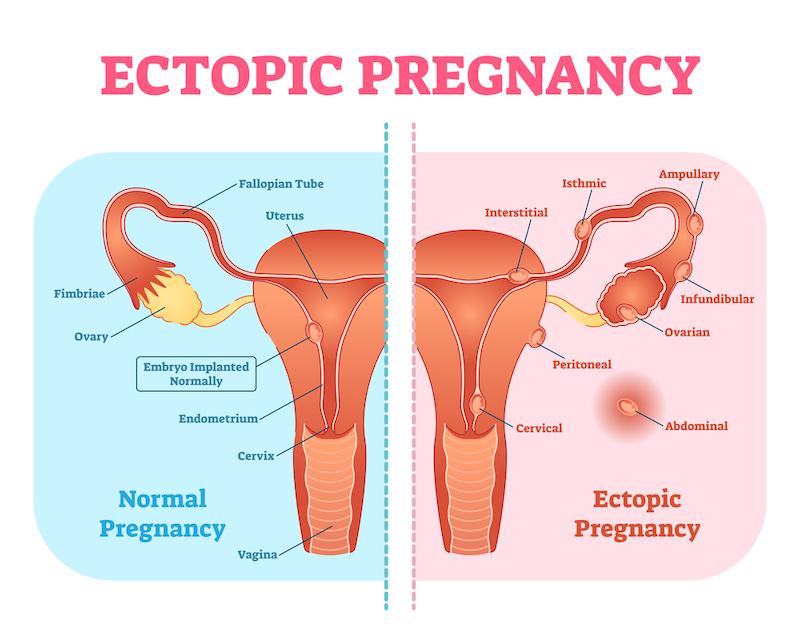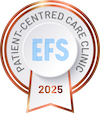Side Effects of Fertility Treatment
Have you been considering undergoing fertility treatment? Have you talked with a fertility specialist about in-vitro fertilization (IVF), the most popular method for achieving pregnancy?
If your answer to any of these questions is ‘yes’, you’d be interested in the information shared here about the possible unwanted effects of these methods.
Fertility treatments are considered generally safe when performed by qualified medical professionals and practiced within established guidelines. However, as with all medical procedures, they can carry some degree of risk.
It has been found that close to 20% of fertility treatment patients stop it mid-treatment due to experiencing physical and psychological problems. [1] Therefore it is essential to be informed about the possible risks before committing yourself to this process.
Of course, every treatment plan may be different, and its safety can vary depending on individual circumstances. Fertility treatments, such as IVF, typically involve hormone medications, surgical procedures, and laboratory manipulations. These interventions can carry potential risks and complications, including ovarian hyperstimulation syndrome, multiple pregnancies, ectopic pregnancies, infection, and anesthesia-related risks.
Ovarian hyperstimulation syndrome (OHSS)
Part of the IVF process involves ovarian stimulation. During that, you will take fertility medications that will stimulate your ovaries to produce multiple eggs. In some cases, the ovaries may respond excessively to the medications, leading to an exaggerated ovarian response. This can result in the development of OHSS.
The exact cause of OHSS is not fully understood. Still, it is believed to be related to the increased production of hormones, particularly chorionic gonadotropin (hCG), used to trigger ovulation. The excess hormones can cause fluid accumulation in the abdomen and sometimes the chest, leading to symptoms of OHSS.
Symptoms of OHSS can vary in severity and may include:
- Abdominal bloating or discomfort
- Nausea and vomiting
- Rapid weight gain
- Swelling of the abdomen
- Difficulty breathing or shortness of breath
- Decreased urine output
- Ovarian enlargement and pain
- Fluid accumulation in the chest (rare cases)
Careful monitoring during ovarian stimulation, adjusting medication dosages based on individual response, and using alternative trigger methods for ovulation in high-risk cases can minimize the risk of OHSS. Being aware of the signs and symptoms of OHSS and communicating any concerns promptly to your doctor is essential.
Multiple pregnancies
There is an increased likelihood of multiple pregnancies, particularly because multiple embryos are transferred to increase the chances of a successful pregnancy. Multiple pregnancies can lead to complications for both the mother and babies. The number of embryos transferred is typically carefully considered and discussed with patients to balance the chances of success with the potential risks. It depends on factors such as the patient’s age, embryo quality, and the specific circumstances of the individual or couple.
To avoid the risks of multiple pregnancies, many clinics now encourage and practice elective single embryo transfer (eSET) in specific situations. eSET, of the transfer of a single embryo, reduces the likelihood of multiple pregnancies while maintaining reasonable success rates.
If you are considering IVF, discussing the potential risks, benefits, and options for embryo transfer with your fertility specialist is important.

Ectopic pregnancy
An ectopic pregnancy is a serious condition in which a fertilized egg implants and grows outside of the uterus, typically in the fallopian tube. Such pregnancy cannot progress normally and can be very dangerous to the woman. With IVF treatment, the risk of ectopic pregnancy is slightly higher than natural conception.
Your fertility specialists will be monitoring you closely during and after IVF treatment to detect and manage any potential ectopic pregnancies. Early detection is crucial, and you should be vigilant about any symptoms, such as abdominal pain, vaginal bleeding, or shoulder pain.
When choosing a fertility specialist or clinic, it is important to discuss individual circumstances, potential risks, success rates, and available treatment options. Qualified professionals can provide personalized information and guidance based on your specific situation, helping you make informed decisions about your fertility treatment journey.
Sources:
- Gameiro, S., Boivin, J., Peronace, L., & Verhaak, C. M. (2012). Why do patients discontinue fertility treatment? A systematic review of reasons and predictors of discontinuation in fertility treatment. Human Reproduction Update, 18(6), 652–669. https://doi.org/10.1093/humupd/dms031
- Villines, Z. (2018, October 31). Fertility drugs for women: What to know. https://www.medicalnewstoday.com/articles/323536#types-of-fertility-drugs
- Risks of fertility treatment | HFEA. (n.d.). https://www.hfea.gov.uk/treatments/explore-all-treatments/risks-of-ferti...






